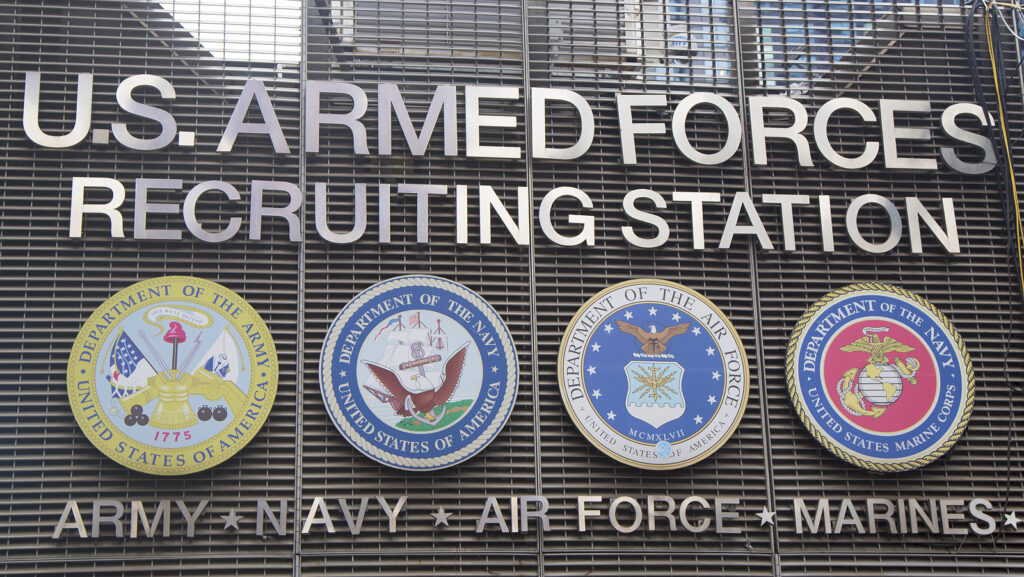The U.S. military has a powerful opportunity to help head off future recruiting shortfalls as the Department of Defense embarks on a new program that provides data to individual states meant to showcase the armed forces as a career for graduating high schoolers.
The emerging problem is that the data DoD plans to send to states is insufficient and the opportunity will slip away unless officials address the deficit.
Only a few short years ago, the U.S. military was in the throes of a bonafide recruiting crisis. In 2022, “the Army missed its quota by over 25%. The service did not fare any better in fiscal 2023, again falling short of its goal to add 65,500 new active-duty soldiers,” the Georgetown University Center for Security Studies reported. The Navy and Air Force also experienced big shortfalls in 2023.
But while recruiting has rebounded, its decline is an ever-present specter. Recruitment, the Georgetown University report said, “has always been one of the military’s most pressing challenges and should be viewed as the norm, not the exception.’
Which is all the more reason the Department of Defense should do all it can to reach the country’s graduating seniors, a prime demographic for the armed forces.
Data sought for several years
For years state education leaders have sought data from the DoD on how their students who elect to serve in the military are faring.
The idea is to offer much-needed information for high schoolers and their parents on what a career in the military could mean – financially and in potential career skills and upward workforce mobility. The other benefit of data sharing is that it helps the services meet recruiting needs through better communication about the value of a military career.
After much back and forth, the DoD recently began developing a data-sharing plan with state leaders. While a good start, the effort requires modifications if it is going to have any real impact.
According to education leaders, the DoD has agreed to provide some data—but only the aggregate number of students who enlist in the military from any given region. That’s not what state leaders need to highlight the military as a possible career path for students, nor what could help the armed services with recruiting, and not by a long shot.
“The data provided about military personnel, while anonymized, should be far more detailed,” said Kate Tromble, vice president for federal policy at the Data Quality Campaign, a non-profit that focuses on education data policy and use. “That would include information such as what high school the service members graduated from; whether the high school properly prepared them for the military; their score on the military enlistment exam; their demographics; what skills they are gaining in the military; how long they stayed in the service.”
States press the Pentagon for assistance
In 2023, Kansas led a group of states in pressing the military about the need for data. Simply put, they wrote, schools and communities lack the data from the armed forces to demonstrate to students that upon graduation they are well prepared to succeed in the military.
“As state leaders, we are dedicated to ensuring all students leave high school ready for success in college or careers, and we believe that serving our country is one viable pathway a student might choose to pursue,” education leaders in more than half the U.S. states wrote the Department of Defense. “Unfortunately, the lack of objective, verifiable data on military enlistment and persistence makes it almost impossible for states to consider military service as a successful post-high school outcome and to confirm if students were successfully prepared to serve.”
“Our priority is to ensure that all high school graduates in our states are ready for college and career success. When students decide to pursue a career in the military, we hope that—and would like to know if— they are succeeding in that career choice. Our efforts as a state education system are only improved when we know how our students are doing,” they said.
Strong support on Capitol Hill
The effort has strong support on Capitol Hill, where a bi-partisan group of lawmakers introduced a bill last year seeking to formalize the data sharing.
Last year, then-Navy secretary Carlos Del Toro complained to Congress that “the Navy’s recruiters have cited a lack of adequate access to high schools as one of their top challenges,” Stars & Stripes reported about a problem experienced by the other military services as well.
As a result, the military has struggled to reach graduating high schoolers with messages about careers in the military. The data-sharing program is an opportunity to impart those messages and for the services to forge much closer relationships with the nation’s high schools.







